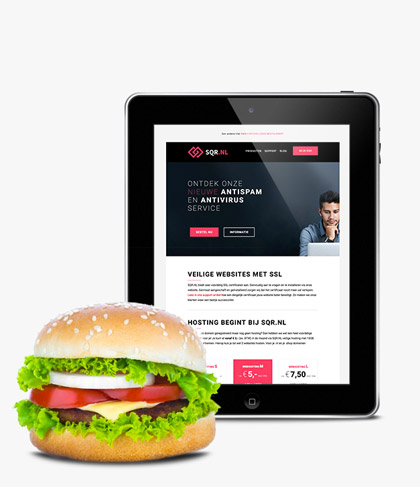Starting your own business

Starting your own business
You want to start as an entrepreneur, you have a good plan, great product or see a unique opportunity. Where do you start? Maybe you’ve already come up with a brilliant name or maybe you’re going to market with your own. Then check first to see if this name is still free as a URL. You can check this very easily via our Domain checker. Think carefully whether you want to go for a .nl domain or a .com, .be or something more exotic like .shop or .tv You can read more about this in: SEO tips for your website, where there is information for a clear URL.
Trade name
After the registration at the
Chamber of Commerce
-where your trade name must also be free- you can open a business account, because of course we are going to work professionally. Be well informed by the banks about opening a business account and the differences from a private account.
About the choice of operating as a sole proprietorship, partnership or limited liability company, it is best to consult a legal advisor or the Chamber of Commerce. Keep in mind the differences in liability of different legal forms. You can also still register your trade name with a trademark agency. This is to prevent another party from operating under the same name in the same industry. Of course, you have already done extensive research for yourself that yourself is also unique enough to avoid problems afterwards. Get advice from a brand specialist like:
Register my trademark
.
Logo and corporate identity
Your trade name or product name must be translated into a word image (such as the supermarkets’ word JUMBO) or logotype (Nike’s swoosh) or logo (word image + logotype). Perhaps you can create this yourself-you’ll probably have an idea for it-or you can outsource it to a graphic designer. A designer or advertising agency can often give you even better advice on what colors, fonts and other corporate identity elements to use. Thus, elements will have to be converted to online and offline variants. Is the use of PMS colors sometimes necessary or, on the contrary, should everything be set up in full color or RGB colors. Because a logo alone won’t get you there. Of course, everything depends on your specific needs and budget to spend.
Business cards
Once the corporate identity is determined, you can have business cards made. There are many variations in this nowadays as plastic cards, round or square shapes or the traditional rectangular shape of 55 x 85 mm. Think carefully about how you want to stand out and whether the shape and size of the card is practical. In addition to the shape, you can also pimp your card with matte or glossy foils and (spot) UV varnishes that allow you to highlight/spotlight certain parts or text. It gives a slightly fancier look as well. But you can also go for recycled paper with eco-friendly inks. It’s “all about the brand” so to speak.
Communications
Nowadays there is much more digital communication and letters are also sent digitally. So the design of your corporate identity will also need to be translated to an online stationery if you want to start sending invoices digitally. It may even be that your clients only process digital invoices.
Registering a unique domain name is necessary if you don’t want to communicate from a G-mail or hotmail address. In some countries it does not matter, but in the Netherlands it does not look professional if you mail from a free account. At SQR.NL you can easily forward one or more
email addresses to your G-mail account
if you want to manage everything from there. Setting up your mail can also be done on your smartphone these days, allowing you to do business anytime, anywhere. You can learn more about setting this up here read.
In addition to your business cards, you may also want to arrange flyers, banners or car stickers. There are many parties online that can provide this for you such as
Drukwerkdeal
,
Reclameland
or
DrukZo
. And you might prefer to arrange it with a local printer or print shop around the corner. As long as it feels right for you and the quality fits the look you want your business to have. In addition to the digital version, it is always useful to have a stack of printed stationery. This is for handing over, for example, important quotes or other documents that you also want archived offline. And a letter to a new customer or prospect immediately stands out, since little is sent by mail anyway. Put yourself right in the picture!
General conditions
Make sure you also have good terms and conditions in place to protect yourself. You can get information about this from your legal advisor, or get information online. You can agree terms and conditions separately with all your customers and suppliers, but it is more practical to make this one document. You should send these terms with your initial offer and draw your customer’s attention to these terms. Afterwards, you can’t assert them. In addition, you can list your terms and conditions on your website. Just remember to inform your customers when you update your terms and conditions and that new terms and conditions apply to make them valid again.
Website
Now that the basics are in place, you can get to work setting up your website. About writing the right texts, choosing the CMS system, analyzing with Google and use of images we have several articles online at SQR.NL. In short, the building can begin. To do so, take a look at the SQR.NL website.
Build your network
In addition, you are probably setting up your administration and working on acquisition. As an entrepreneur, a lot comes your way. Nice things too, of course. There is plenty of information at various start-up desks and networking associations, where entrepreneurs meet and advise each other. There are nationwide initiatives such as
BNI
and
Open Coffee
, as well as local networking organizations. Take advantage of these networks and the knowledge present there and slowly build your business into a thriving business!
